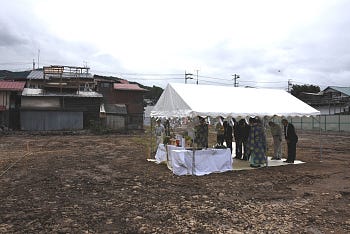Pre-issue #1 - Diplomats trained in sake jargon, Mikotsuru, Katsuyama Shuzo at IWC, 107th National New Sake Competition
Know More. Appreciate More.

Diplomats to get training in sake jargon
Starting from July, the Japanese government has decreed that all new foreign-based diplomats will undergo training in the basics of sake production, history and terminology.
Up until this year the training was considered optional but as sake exports increase along with other Japanese food products, the government is seeking to further promote the appeal of nihonshu through foreign diplomacy.
At formal banquets in Japan's 150 embassies and consulates around the world it has been customary to serve wine but recently the consuls have introduced the policy of serving brands of sake that have been recognized at foreign held competitions to assist in promotion of Japan's national beverage.
Source: Nikkei

Mikotsuru under new ownership
Embattled brewery Hishitomo Shuzo, makers of Mikotsuru have been given a second life under new ownership. Located in Shinosuwa, Nagano Hishitomo Shuzo filed for bankruptcy in 2017 but was bought out in 2018 by Fukushima-based transportation company Banei Unsou.
After demolition of the old brewing plant, construction began in July on a new brewing facility due for completion in November 2019. The new brewery will include a "cellar door" style store for tastings and retail purchases as well as access for visitors to see the inside of the brewery and the sake making process.

Contracts are already in place to source locally grown Kinmon Nishiki and Sankei Nishiki - a rice strain developed in Nagano. Brewing staff will also increase from four to ten.
Executive director of brewing Mr Takuchi says,
"The city of Shimosuwa is blessed with an abundance of natural resources and a healthy tourism industry. We hope this will give us a good base from which we can promote the growing popularity of sake."
Source + Image: Shinmai
Katsuyama Shuzo awarded Champion Sake at 13th International Wine Challenge
On July 9th Miyagi brewery, Katsuyama Shuzo's 'Katsuyama Ken' junmai ginjo was named as Champion Sake at the 13th International Wine Challenge in London. The sake was praised as being "elegant and clear with umami characteristics". Katsuyama Shuzo CEO, Heizo Izawa was on hand to accept the award saying,
“While this is like a dream come true, this award also brings with it a weight of responsibility to continue promoting sake to the rest of the world. Since the Tohoku earthquake in 2011 sake brewing has become a symbolic pillar of the recovery for the community and I hope we can continue to brew quality sake and show the world our tenacity and determination.”
432 breweries submitted 1,500 different sake to the competition with IWC judges choosing the best in each category in April. The Champion Sake was chosen from the best of each category. The 'Great Value Sake Award' went to Kikumasamune Brewery in Kobe for their carton sake, 'Kikumasamune Fresh pressed SilverPack' (Shiboritate Gin Pack) and Heiwa Shuzo in Wakayama were awarded 'Sake Brewer of the Year'.
Adding to their accolades, Katsuyama Shuzo was also awarded top honors receiving the 'President's Award' for their Katsuyama 'Den' at the recently held Kura Master Concour in France. The competition, now in its third year, saw 93 sommeliers from across France evaluate 720 sake from 271 breweries in four categories: Junmai, Junmai Daiginjo, Sparkling (standard), Sparkling (soft).
Source: Nikkei

Fukushima leads the gold medal tally again at annual New Sake Competition
The results of the 107th National New Sake Competition (Zenkoku shinshu kanpyoukai) are in. Fukushima prefecture has cleaned up again taking 22 gold medals to be the highest awarded prefecture for seven years running. Akita prefecture came in second with 18 gold and Hyogo prefecture rounded out the top three receiving 16 gold medals.
This year saw 857 sake from across Japan evaluated with 237 gold medals awarded. Fukushima has been working valiantly to maintain quality and safety since the nuclear power plant incidents in 2011.
Source: NHK
What's in a name?
By John Gauntner
We all know sake can be confusing. Grades, production, rules, customs, practices – each of these facets of the sake world has vagueness, exceptions, and varying interpretations to which they are subject. Not the least of these, especially for those of us that work with sake overseas, is naming.
Each sake will have, of course, a brand name. And each will also have a company that brews it, which will have a name as well. In many (dare I say most?) companies around the world that produce branded alcoholic beverages, the brand name and the company name are the same. In the sake industry, sometimes this is the way it is, but more often than not, it is not the case.
For example, the sake Rihaku from Shimane is brewed by a company called Rihaku Shuzo. Hakutsuru sake from Hyogo is brewed by Hakutsuru Shuzo. But Tsuki no Katsura sake from Kyoto is brewed by Masuda Tokubei Shouten. Dewatsuru sake from Akita is made by a company called Akita Seishu.
By the way, “shuzo” means “alcoholic beverage brewing,” and is a common part of company names. Note, though, that not all sake breweries use this phrase. Another phrase commonly seen in sake brewery company names is “honke,” which means “the main family line.” Very often in those days of old, sons would start their own companies and take similar names. This must have led the original companies to remind everyone they were the real deal by adding honke to their name. If a brewery name has honke in it, like Terada Honke (brewers of Gonin Musume) or Nagayama Honke (brewers of Taka), you can be sure they are companies with a long history behind them.
While it can be a hassle, and may not seem to make sense, in truth, we just have to deal with it. But why is it this way?
To understand it, there are two important points to remember.
One, most sake breweries are quite old. In fact, very few are under a century old. And two, long ago, many – if not most – sake breweries were started by wealthy families that ran family businesses with multiple enterprises. For example, not surprisingly many were started by rice distributors. Others may have dealt in oil or lumber. One brewery, Saito Shuzo, brewers of Eikun in Kyoto, sold kimonos for hundreds of years before going into sake in the late 1800s.
To some degree, this is still the case today, as not a few sake brewing families run a sake brewery as well as own land, or run convenience stores or gas stations, or other (arguably more lucrative) businesses.
And back then, the name of the company that oversaw all of these was most commonly a formal version of the family name.
As time passed, very often the other, non-sake businesses faded away and were closed down so that it came to the point where the only business left under the family name was the sake brewery. But the original company name was still the name of the sake brewery.
It is not hard to imagine how difficult it would be to change the company name if it has been the same for 200 hundred years – just for the sake of making things easier for your customer base. If the product is good, then they will get over it. Or so goes the thinking.
However, while many companies have had an understandable resistance to changing their traditional name to one that is more customer-friendly, there are also those companies who were not overly attached to the old family name. They realized that from a practical standpoint making the company name the same as the sake brand name would only benefit marketing efforts. And in truth that has happened quite often in the last hundred years or so.
There are other discrepancies and reasons for them. For example, many decades ago the brewing industry in Akita prefecture in the northern part of Japan decided to target the Tokyo market, and for some reason many of them decided on new company names with the name Akita in them; Akita Shuzo, Akita Meijo, Akita Shurui Seizo, Akita Hakko Kogyo etc. Now that is really confusing! While identifying their product as being from Akita was perceived to have great marketing value, it also makes it difficult to remember which company makes which sake. But it is what it is.
The real point is that there is no uniformity across the industry on any of this. Anywhere you go in Japan, there are all kinds of examples of brand names and company names, some that match, and some that do not. We just have to deal with it.



Congratulations on the new website. Enjoying the crisp, clean, dai-ginjo level of layout. Only suggestion would be to add at the top of the page links to all the subsequent articles. It is quite long (not complaining--lots of information) and a wee bit tedious to try to find a particular article again.